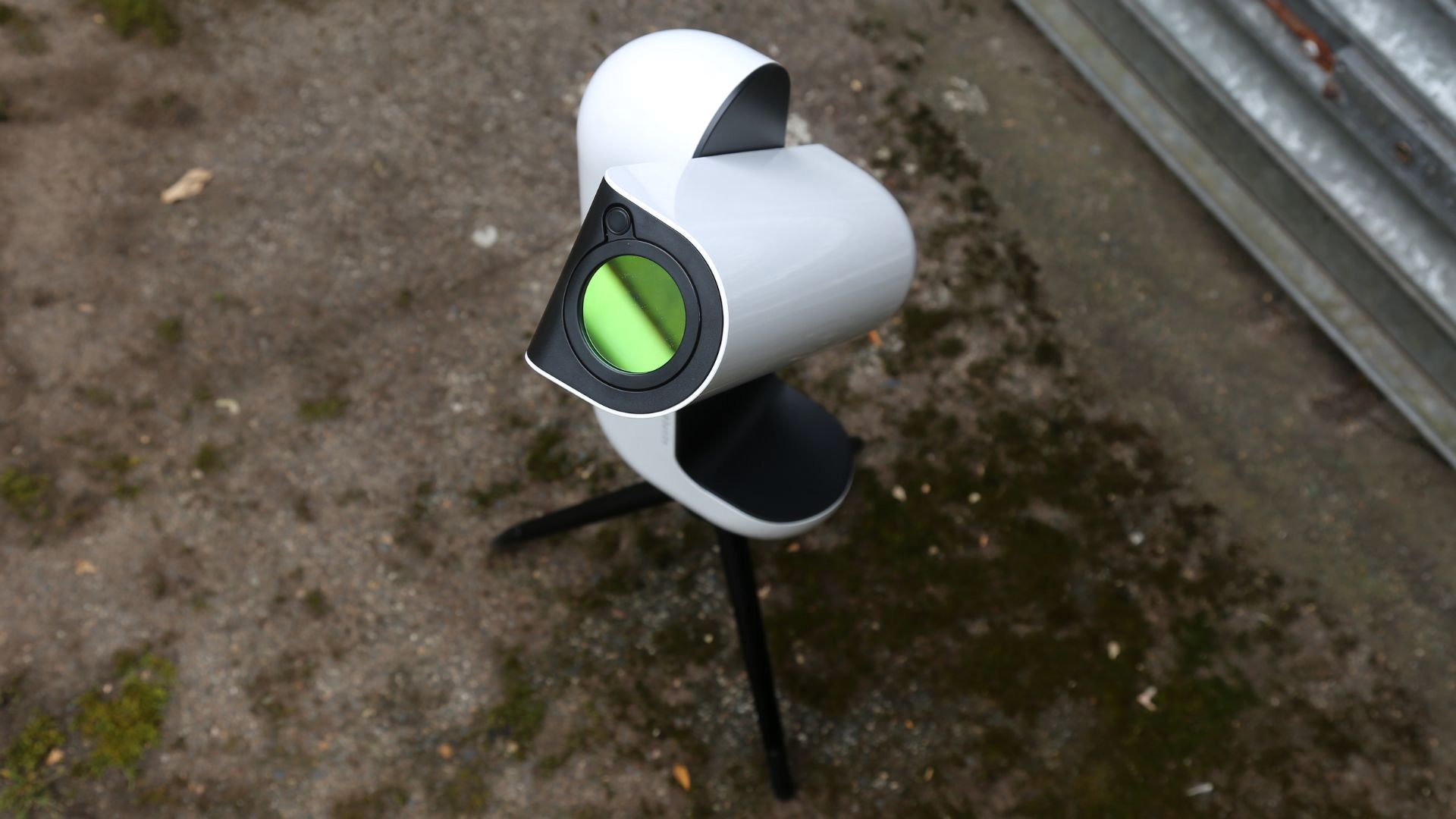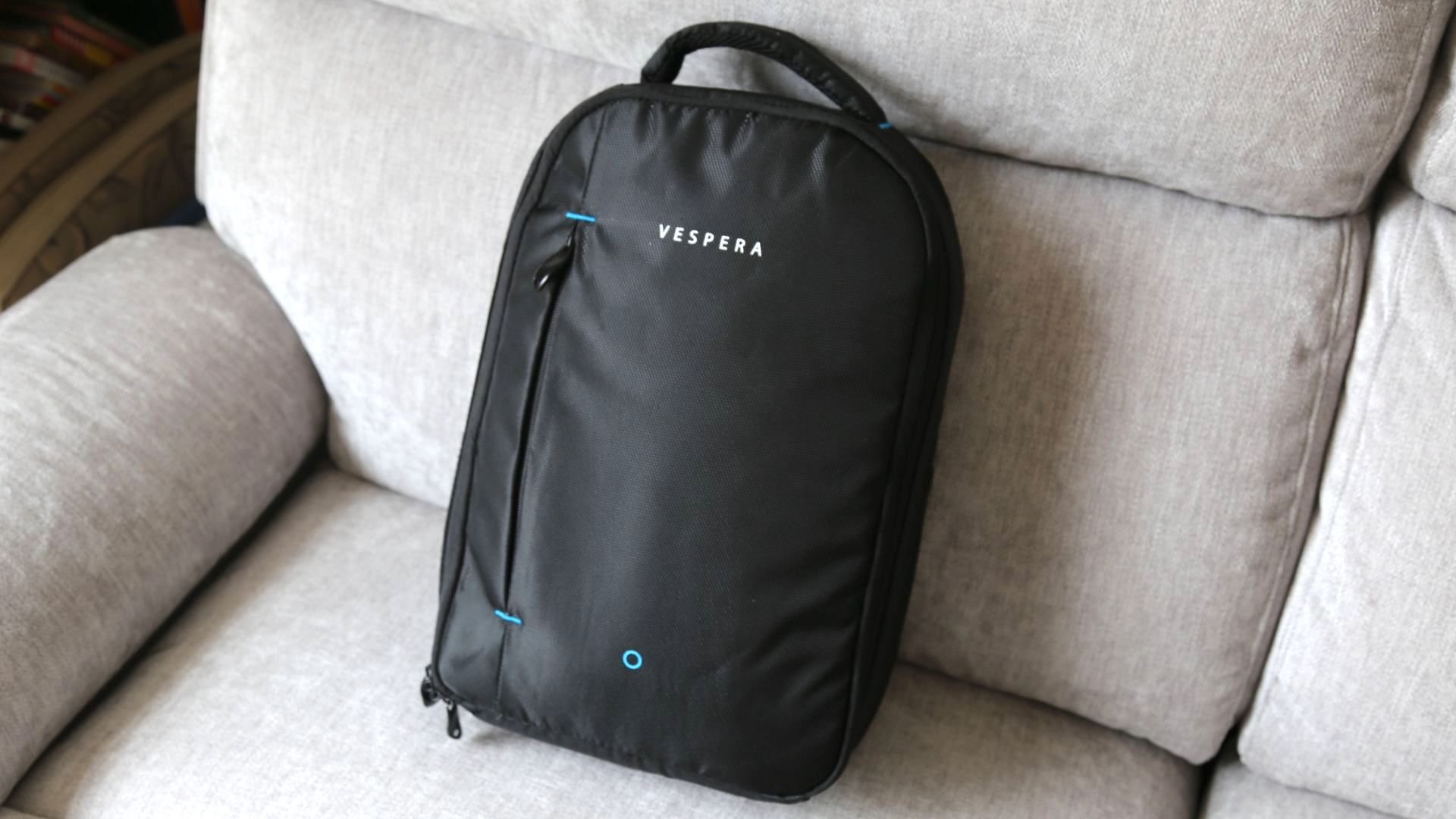Digital Camera World Verdict
One of the best and most affordable smart telescopes despite its astronomical price, the Vanois Vespera is very easy to use and even produces raw files that can be post-processed for more advanced astrophotographers.
Pros
- +
Super-quick set-up
- +
Effective light pollution filter
- +
TIFF and FITS files can be extracted
- +
Excellent smartphone app
- +
> Solar filter available
Cons
- -
No eyepiece
- -
Requires full-size tripod
- -
Four-hour battery
- -
Proprietary charging cable
Why you can trust Digital Camera World
• Buy the Vaonis Vespera telescope at Astroshop
The Vanois Vespera smart telescope is an ambitious attempt at an all-in-one device for observing the night sky and for astrophotography. Unlike a regular telescope, it doesn't have an eyepiece. Instead, this small, sleek device spits out a Wi-Fi network. Operated solely via the Singularity app, the Vespera is little more than a small refracting telescope equipped with a camera sensor. Aligning automatically with the night sky, it takes long exposure images of deep sky objects that are instantly viewable on a smartphone or tablet. You can then download these images and share them, either in basic JPEG quality or extracted as lossless raw files. Is the Vespera the ideal smart telescope for both observing the night sky and has an all-in-one astrophotography solution? Here’s everything you need to know about the latest smart telescope.
Vanois Vespera specs

Optical design: Apochromatic (APO) quadruplet refractor
Aperture: 2”/50 mm
Focal length: 8”/200 mm
Focal ratio: f/4
Field of view: 1.6 x 0.9º
Magnification: x33
Battery life: 4 hours
Weight: 11 lbs. / 5 kg
Mount type: altazimuth
Key features

The Vespera is tiny. Weighing just 11 lbs./5 kg, the small, curved unit comprises a 1.6GHz computer equipped with a 1/2.8" Sony IMX462 sensor alongside a small swivelling 2”/50 mm refractor telescope. Inside is a 7,000 mAh battery. On one side is a connector for attaching a magnetic charging cable. Sadly it’s a proprietary cable, which means you’re going to have to take a lot of care to make sure it never gets separated from the Vespera. There’s also a magnetic bubble/spirit level that attaches to the same connector, though it’s very easy to lose. On the underside is a tripod thread and in the box is a tiny collapsed tabletop tripod.
Vanois sells an extendable full-size tripod ($149/£118) along with a host of other accessories. There’s a light pollution filter for observing from cities ($199/£158), a dual-band filter for better capturing faint nebulae ($399/£316) and a solar filter for solar viewing and partial solar eclipses ($99/£79). The latter makes it the first smart telescope that can also be used to observe the Sun, though it wasn’t available at the time of this review. Vanois also sells a hygrometer sensor ($99/£79), which will tell you about humidity. Also available is an excellent, beautifully made backpack ($149/£118).
• Buy the Vaonis Vespera accessories at Astroshop
Build & handling

The Vespera is incredibly easy to use. With it set up on a tripod, and a smartphone attached via its Wi-Fi network, the Vespera gets to work using its star pattern recognition software to align itself with the night sky. A few minutes later the Singularity app presents the user with a list of potential targets. Choose one and the Vespera takes a few minutes to slew to it and get it in focus in its field of view. It then takes an image of that target – a nebula, a galaxy or a globular cluster – every 10 seconds. Then overlays the images to increase the contrast and lessen the image noise.

The Singularity app tells you how long it thinks you should let the Vespera observe an object for. Some are 10 to 15 minutes, others over an hour. Either way, you can sit close by (or even inside your house) and watch the image improve over time. At any point you can also watch a short video of how the image has improved.
It’s really worth watching once Vespera has imaged an object about 40 times, though sadly it’s not possible to save that video to watch later. That’s a shame because it would really help showcase on social media the Vespera’s unique live image stacking abilities to the many amateur astronomers that remain suspicious and confused about so-called ‘smart telescopes’ like the Vespera.
Performance

The images produced by Vespera of faint objects from a light-polluted backyard – particularly when using the add-on light pollution filters, but even without – are astounding and easily good enough to share online.
However, don’t expect high-resolution, detailed images. The 1920x1080 pixel images can, however, be exported as TIFF and FITS files for post-processing (though do extract them you do have to change the settings and connect to the Vespera from a computer via WiFi and a web browser, which is a bit of a faff). It’s also possible to manually change the framing on objects so as to capture several separate images that you can later merge together in post-processing. Vespera tells us that an upcoming feature on Singularity in 2023 called ‘mosaic mode’ will do this automatically. Another manual option on the Vespera allows the entering of coordinates of passing comets or whatever else you want to slew to that’s not in the Singularity app.


Despite the brilliance of the Vespera in coping with light pollution and some of the incredible images it’s capable of taking of faint objects – most of which optical telescopes can't easily see from cities – there are some things that it cannot do. Despite the Singularity app allowing slewing to planets and the Moon, it struggles with both. In fact, planets are virtually invisible while the Moon is a blueish mess. Proof, once again, that smart telescopes are for rich-field observing only. So it might be wise to pair the Vespera with one of the best budget telescopes.
Since it's best to leave Vespera observing some objects for an extended length of time, the four-hour battery life can begin to be an issue. The best advice is to have a smartphone battery with you when using the Vespera, as well as the proprietary charging cable. A great addition to the Vespera would also be any third-party photographic tripod, which will give the telescope a much wider view of the night sky, enabling it to look at more targets closer to the horizon.
Vaonis Vespera verdict

The Vaonis Vespera is a hugely impressive, albeit extremely expensive smart telescope that sadly has seen its price increase dramatically due to supply issues. By allowing the extraction of raw files for post-processing, it's one of the first smart telescopes to try to bridge the gap between convenience and quality. However, we're not convinced that the Vespera is going to appeal to dedicated astrophotographers who already have a rig. The resolution just isn’t there and neither, arguably, is the sharpness. Instead, this smart telescope is perfect for anyone looking to observe the deep sky from urban areas where light pollution makes that physically impossible using any other kind of telescope. That alone makes it one of the most impressive telescopes available.
• Buy the Vaonis Vespera telescope at Astroshop
See also our astrophotography guides:

Jamie has been writing about photography, astronomy, astro-tourism and astrophotography for over 15 years, producing content for Forbes, Space.com, Live Science, Techradar, T3, BBC Wildlife, Science Focus, Sky & Telescope, BBC Sky At Night, South China Morning Post, The Guardian, The Telegraph and Travel+Leisure.
As the editor for When Is The Next Eclipse, he has a wealth of experience, expertise and enthusiasm for astrophotography, from capturing the moon and meteor showers to solar and lunar eclipses.
He also brings a great deal of knowledge on action cameras, 360 cameras, AI cameras, camera backpacks, telescopes, gimbals, tripods and all manner of photography equipment.


